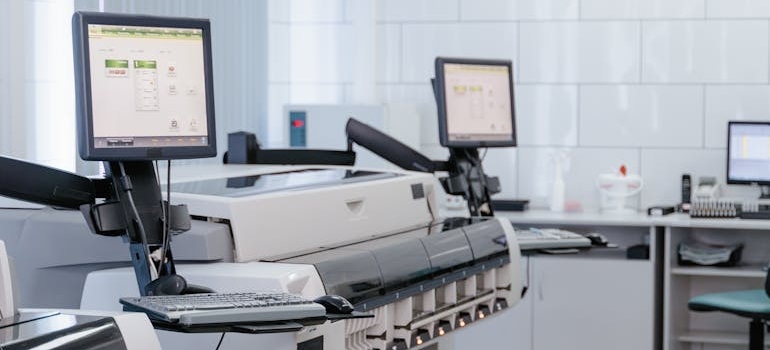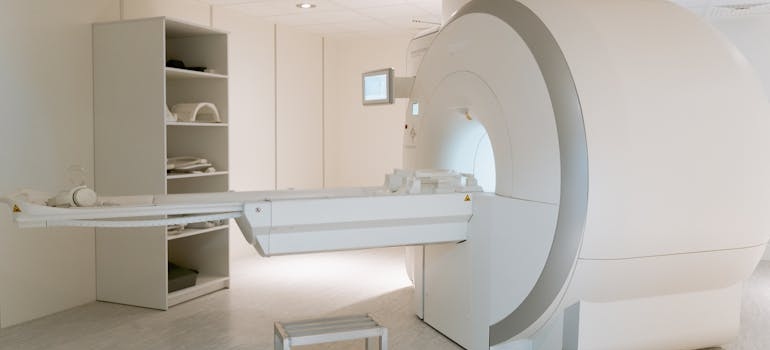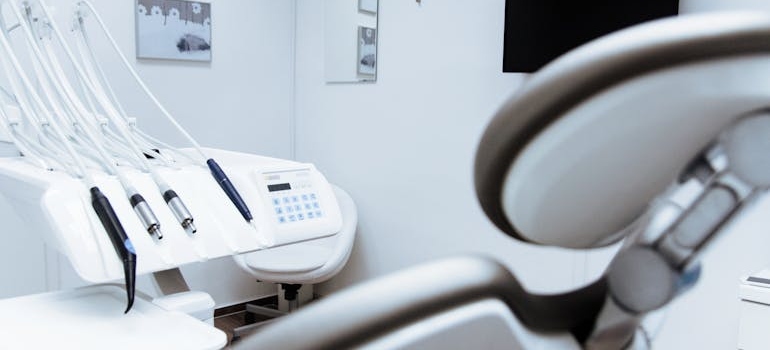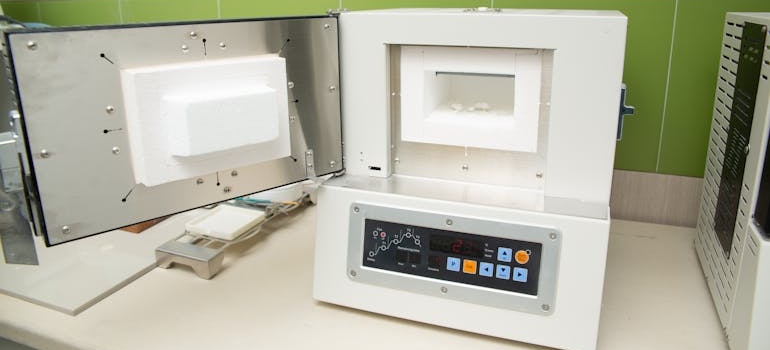Transferring Medical Equipment: Facts to Know
When it comes to healthcare, the efficacy of medical services often hinges on the skills of healthcare professionals, the quality of treatments, and the availability and condition of necessary medical equipment. Moving this equipment, whether due to upgrading facilities or relocating practices, is a critical task that carries significant implications for patient care. While the complexity of transferring sensitive medical apparatus is evident, not everyone understands the depth of precision such operations require. Transferring medical equipment involves detailed planning, coordination, and the kind of expertise that seasoned Idaho movers provide. But have you ever considered how recent technological advancements have transformed the logistics of medical equipment transfer? With new innovations, the process today is far different from what it once was, offering challenges and unprecedented opportunities to enhance efficiency and safety.
The Hidden Complexities of Transferring Medical Equipment
Moving medical equipment is a precision-driven process that demands an expert approach for each device, big or small. From lightweight thermometers to bulky MRI machines, every item must receive careful handling to ensure safe transit.
For example, electromagnetic interference during transport can wreak havoc on sensitive devices such as monitors and imaging equipment, leading to malfunctions or data loss. Similarly, shifts in temperature can be just as damaging, especially for equipment that requires a controlled environment. These fluctuations can degrade sensitive components, sometimes causing irreversible damage.
Why would you have significant operational disruptions when a sensitive ultrasound machine was exposed to variable temperatures during transit? The aftermath includes costly repairs and extended downtime. The challenges don’t stop at transporting the equipment; they also involve managing stringent health and safety regulations to ensure that everything remains sterile and functional. The complexity of these tasks underscores the need for expertise that goes beyond standard shipping protocols.
So, how do seasoned professionals manage these risks to ensure that medical facilities continue to function efficiently after relocation? The expertise of medical equipment shipping services encompasses a full range of solutions designed to address the regulatory, technical, and environmental challenges of transporting sophisticated medical apparatus.

Technological Innovations in Medical Equipment Logistics
The field of medical equipment logistics is experiencing a rapid transformation driven by the integration of cutting-edge technologies that enhance efficiency and security in transport processes. Innovations such as real-time tracking systems, advanced protective materials, and climate-controlled transportation are revolutionizing the way experts handle and move medical equipment, establishing new industry standards.
Advanced Tracking and Monitoring Systems
Handling and transferring medical equipment requires precision, and modern GPS tracking systems are at the forefront of ensuring that precision. The systems provide continuous updates on the equipment’s location, enabling logistic teams to respond swiftly to deviations from planned routes or unexpected delays. Such accurate tracking ensures equipment’s safe arrival and significantly reduces the risk of loss or theft:
- Real-Time Data: Logistic teams receive instant data on equipment movement, which is essential for proactive management during long-haul transports.
- Geofencing: This feature alerts teams if equipment moves outside predetermined geographical boundaries, enhancing security measures.
Climate-Controlled Transportation
Maintaining stable environmental conditions is crucial for delicate medical devices. Innovations in transportation now allow for the control of temperature and humidity levels within transport vehicles, ensuring that sensitive equipment such as imaging machines and laboratory instruments remains fully operational and undamaged by external conditions:
- Temperature Regulation: Specialized vehicles equipped with sophisticated HVAC systems can maintain specific temperatures, which is vital for the integrity of many medical devices.
- Humidity Control: Maintaining the correct humidity levels prevents condensation and moisture damage, which can be critical for electronic and optical components.
Impact of Technological Advancements on Equipment Safety
Recent studies underscore the significant impact of these technologies. For example, the use of climate control in vehicles decreases equipment failure rates upon delivery by 40%. Such failure rate reductions protect valuable equipment and lower costs associated with repairs and replacements:
- Cost Efficiency: Implementing these technologies reduces the financial burden of equipment loss and extends the lifecycle of medical devices.
- Enhanced Reliability: With reduced risk of damage, healthcare facilities can rely on their equipment to be ready for immediate use upon arrival.
Collaboration with Commercial Movers
Partnering with experienced commercial movers who leverage these technological solutions can help logistics professionals overcome traditional barriers and enhance the safety and reliability of medical equipment transport. Trained movers bring expertise in handling high-value medical equipment, ensuring that every logistical aspect, from packing to installation, adheres to the highest standards.
- Expert Handling: Reputable commercial movers get the necessary training to handle and install sensitive equipment using the latest techniques and tools.
- Comprehensive Logistics Services: These professionals provide end-to-end solutions that include everything from initial planning to final setup, ensuring a seamless transition for medical facilities.
With each technological step forward, the medical equipment logistics industry enhances its capability to ensure that vital healthcare tools are always ready for patient care. Advancements foster a higher standard of service delivery, making it possible for healthcare providers to maintain continuity and quality of care even as their operational needs evolve.

Ethical and Regulatory Considerations in Medical Equipment Transfer
Navigating the ethical and regulatory landscapes is critical when transferring medical equipment. Each piece of equipment carries responsibilities beyond operational integrity, including adherence to strict ethical standards and regulatory guidelines.
Ethical considerations are especially important when transferring used medical equipment. It is crucial to ensure that this equipment is properly decontaminated and still meets performance standards before it is reused or donated. Similarly, regulatory challenges arise from the need to comply with local, national, and international laws governing medical device transportation and certification. Key points to consider include:
- Decontamination: All equipment must undergo thorough cleaning processes to meet health and safety standards.
- Certification: Equipment must be certified for use in its new location, which may involve re-certification under different regulatory bodies.
- Documentation: Proper documentation of the equipment’s condition, history, and compliance with regulations is essential for legal and operational transparency.
In the context of these challenges, the role of commercial equipment movers becomes indispensable. These professionals apply the latest regulations and possess the necessary expertise to manage the logistics of such sensitive transfers. They meet all ethical and regulatory requirements, safeguarding patient safety and the reputations of healthcare facilities. Such an approach ensures equipment transfers with the highest standards of ethics and compliance, trust in the healthcare system, and patient safety across different regions.
Economic Impact of Equipment Transfer on Healthcare Costs in the United States
Understanding the financial implications of transferring medical equipment is crucial for healthcare facilities aiming to optimize their resources. So, when facilities consider the economics of moving medical equipment, several factors come into play:
- Cost of Transportation vs. New Purchases: Moving equipment with skilled handlers can often be more economical than buying new, especially for high-value items.
- Longevity and Depreciation: Well-maintained equipment can retain functionality and value, making transfer a financially sound decision.
- Operational Downtime: Efficiently managed moves minimize downtime, reducing the financial impact associated with interrupted services.
Strategic equipment transfer can significantly influence overall healthcare costs, often providing cost-effective solutions compared to purchasing new equipment. This is particularly relevant in the United States, where healthcare spending is notably high.
Cost Analysis of Transportation vs. New Purchases
When healthcare facilities consider the economics of moving medical equipment, they need to weigh several factors:
- Direct Costs: Transporting equipment, especially over long distances or across state lines, incurs expenses, including logistics planning, packing, the actual transport, and installation. Facility managers must compare these costs to the price of new equipment purchases.
- Indirect Costs: There are also indirect costs, such as the risk of equipment damage during transit and potential operational downtime, which can be substantial.
For many facilities, especially those in expansive states like Idaho, moving equipment with skilled handlers can be more economical than buying new, particularly for high-value items like MRI machines and CT scanners. The decision often depends on the comparative analysis of depreciation rates, the remaining useful life of equipment, and the upfront cost of new purchases versus the total cost of relocation.

Impact on Longevity and Depreciation
The decision to transfer medical equipment often hinges on assessing its remaining lifespan and depreciation. Well-maintained equipment that can retain functionality and value over many years presents a viable option for transfer. Healthcare facilities must carefully evaluate whether the equipment will continue to meet their needs as technology advances or if it risks obsolescence.
Financially, the equipment’s depreciation rate plays a critical role. Items depreciating slowly are generally better for transfer, as they maintain a higher residual value over time. This evaluation helps facilities make informed choices about whether to invest in moving existing equipment or purchasing new items that might offer longer-term advantages with newer technology.
Operational Downtime and Service Continuity
Minimizing operational downtime is crucial during the equipment transfer process, especially in healthcare settings where service interruptions can significantly impact patient care and facility revenue. Efficient logistics planning is essential to execute swift equipment moves, reducing the period during which critical tools are unavailable. Incorporating furniture installation services into the logistics plan enhances the process.
Such services may not focus solely on just office furniture but extend to the careful installation of medical fixtures and equipment in new locations. This step is particularly critical for medical fixtures and specialized healthcare equipment, as it helps to resume medical services swiftly and without unnecessary delays. Strategic planning and the use of specialized services can lead to substantial savings for healthcare facilities. It proves that a well-thought-out transfer process is key to effectively managing healthcare budgets.
Broader Economic Impacts on Healthcare Affordability and Access
Strategic equipment transfer can also have broader implications for healthcare affordability and access:
- Cost Savings: Effective cost management through equipment transfer can allow facilities to allocate funds to other areas, such as patient care, staff training, or facility improvements.
- Healthcare Access: In rural or underserved areas, particularly relevant in states like Idaho, the ability to maintain and efficiently use existing equipment can directly impact healthcare delivery and access.
Through careful consideration and the engagement of specialized services, facilities can make financially sound decisions that benefit their operations and enhance patient care quality. The economic analysis of equipment transfer versus new purchases shows that a well-thought-out transfer process is a key component in managing healthcare budgets effectively, potentially leading to substantial savings and improved healthcare outcomes across the United States.

Preparing for the Unexpected: Disaster Recovery and Equipment Transfer
The ability to swiftly and safely transfer medical equipment is crucial during routine relocations and vital in disaster recovery scenarios. Efficiently transferring medical equipment can be lifesaving in emergencies, such as natural disasters or other crises that necessitate the rapid deployment of medical resources.
Disaster Preparedness and Rapid Deployment
In emergency situations, the speed at which medical equipment can move and redeploy directly impacts the effectiveness of medical responses. Advanced logistics capabilities that include modular medical equipment setups and pre-planned rapid deployment protocols are essential. These systems ensure that healthcare facilities can quickly relocate essential services to impacted areas, maintaining continuity of care when it is most needed.
Enhanced Training and Simulations
Regular training and simulation exercises for healthcare staff and logistics teams are crucial. These drills should focus on the emergency deployment of medical equipment, ensuring that all personnel are proficient in quickly setting up and using transported devices. Fostering a high level of preparedness can improve facilities’ operational readiness and response times during actual disasters.
Innovative Use of Technology in Disaster Scenarios
Leveraging technology such as blockchain for real-time inventory management or AI-driven logistics platforms can enhance the efficiency and accuracy of transferring medical equipment in disaster situations. These technologies can predict logistical challenges, optimize routes, and manage supplies dynamically, ensuring that medical equipment and resources are available where they are most needed, without delay.

